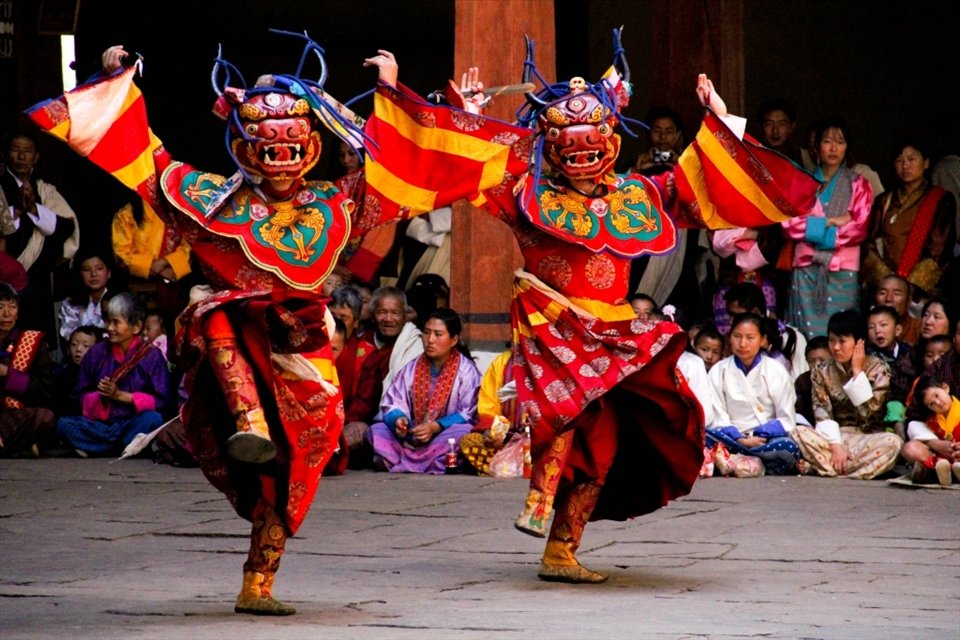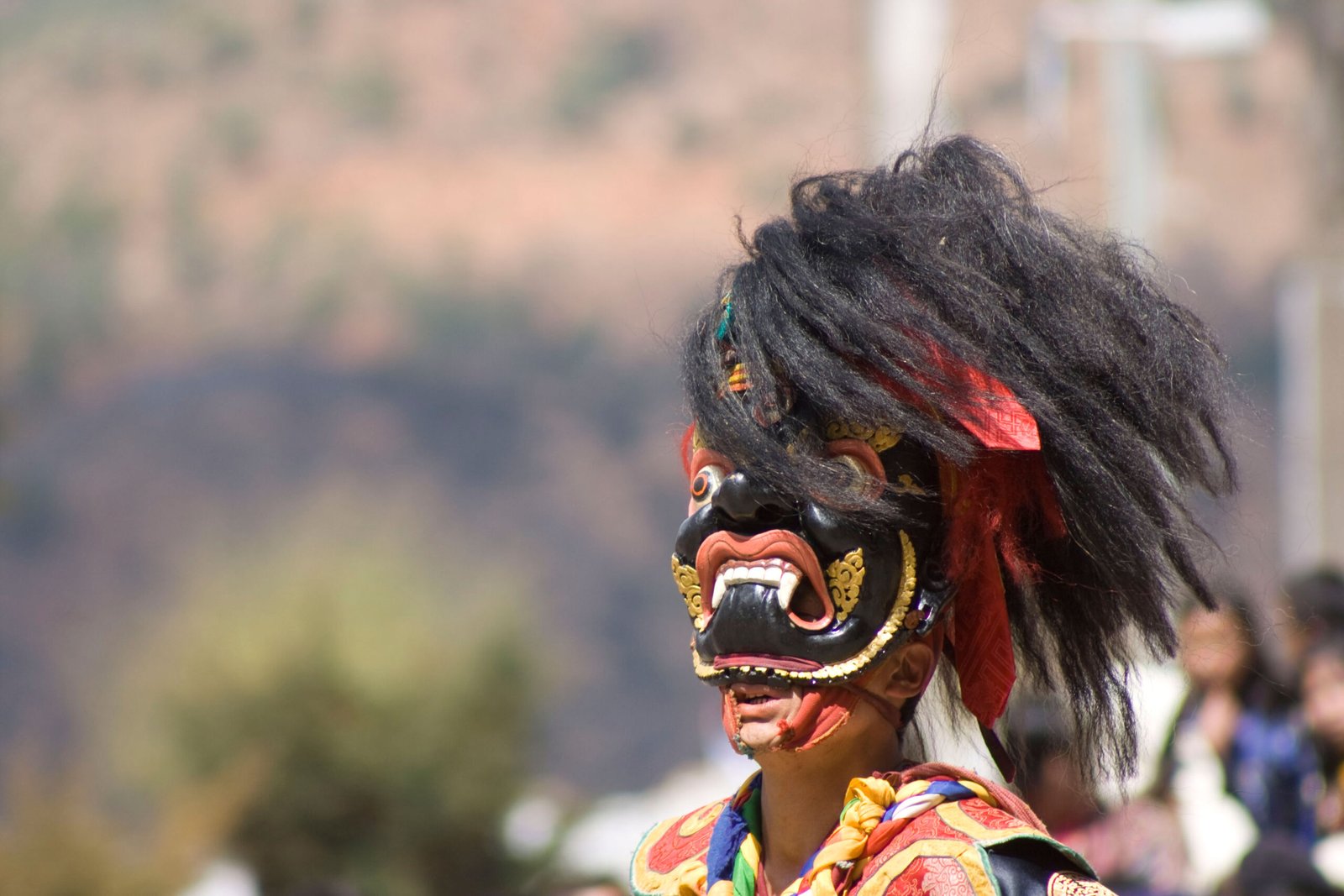
Buddhist Festival
-

-

Dungsingma Tshechu
Dugsingma Lhakhang PemaGatshel, Bhutan -

Phongmey Tshechu
Wogmin Ugyen Choling Lhakhang Trashigang, Bhutan -
Tshogoenpa Tshechu
Tshogonpa Lhakhang Trashigang, Bhutan -
Wamrong Tshechu
Wamrong Lhakhang Trashigang, Bhutan -
Drametse Tshechu
Thechog Ugyen Namdrol Choling Monastery Mongar, Bhutan -
Descending Day of Lord Buddha
Country-wide , Bhutan -
Nimalung Tshechu
Nimalung Dratshang, Chumey Bumthang, BhutanThe Nimalung Festival is conducted at Nimalung Lhakhang, situated in Chumey within the Bumthang region. This Tshechu is an annual event, taking place in the 5th month of the Bhutanese calendar. A remarkable highlight is the display of a colossal 9-meter-wide Thongdrol of Guru Rimpoche, which not only evokes awe but is also believed to purify the sins of all who gaze upon it. Throughout the Tshechu, a series of vibrant and mesmerizing mask dances are performed.
-
Kurjey Tshechu
Kurje Lhakhang Bumthang, BhutanKurjey Tshechu, also known as the Kurjey Festival, is celebrated in Bumthang at Kurjey Lhakhang, which consists of three temples located in Chokhor Valley. This annual festival occurs in July. The oldest temple, established by Lama Minjur Tempa, dates back to 1652, while the second temple was constructed by Gongsa Ugyen Wangchuk in 1900. The third temple, built by Queen Mother Ashi Kezang Choden Wangchuk, was completed in 1990.
-
Thimphu Drubchen
Trashichhoedzong Thimphu, BhutanIn the vibrant capital of Bhutan, Thimphu, a unique religious festival known as Thimphu Drubchen takes center stage, preceding the grand spectacle of Thimphu Tshechu. This is held over three days before Tshechu and is a deeply rooted tradition that has captivated both locals and visitors for centuries. However, the 2nd day is considered the most important. The origins of Thimphu Drubchen can be traced back to the early 18th century, when Kuenga Gyeltshen, the first reincarnation of Jampel Dorji and son of Zhabdrung Nawang Namgyel, introduced it. According to legend, Kuenga Gyeltshen witnessed the deity Palden Lhamo performing sacred dances while he was in meditation. Inspired by this divine vision, he initiated the Drubchen ceremony. The heart of Thimphu Drubchen lies in its mesmerizing mask dances, performed by monks and dedicated to Palden Lhamo, the protector deity of Bhutan. These dances, believed to possess the power to ward off…
-
Tamzhing Phala Choedpa
Tamzhing Lhundrup Choli Bumthang, BhutanTamshing Phala Choepa: A Tribute to Pema Lingpa In the tranquil landscapes of Bumthang, Bhutan, lies the venerated Tamshing Monastery, a spiritual sanctuary renowned for its profound connection to Pema Lingpa, one of the five Terton Kings in Mahayana Buddhism. Each year, the monastery transforms into a vibrant stage for the Tamshing Phala Choepa festival, a three-day celebration honoring Pema Lingpa's extraordinary legacy. The festival's captivating centerpiece is a series of mask dances, each infused with symbolic meaning and embodying the teachings of Buddhism. Dancers adorned in elaborate costumes and masks perform with captivating grace, their movements echoing the stories and teachings passed down through generations.
-
Thimphu Tshechu
Trashichhoedzong Thimphu, BhutanThe Thimphu Tshechu is a major festival in Bhutan’s capital city. It lasts for three days in the 8th lunar month and celebrates the birth of Guru Rinpoche, the founder of Tibetan Buddhism. The festival was started by Tenzing Rabgye, the 4th ruler of Bhutan, in 1670. It takes place in the Tashichhodzong, a fortress and monastery that serves as the seat of government and religion. Thousands of people from different regions come to watch the festival, which is a religious and social event. By attending the festival, people believe they can earn merit and blessings. They also enjoy the colorful and lively performances of masked dances and comedy skits. The dances are based on the Tantric teachings and invoke the power of the deities to dispel evil and bring peace and happiness. The festival has evolved over time, with the addition of more dances by lay monks in the…
